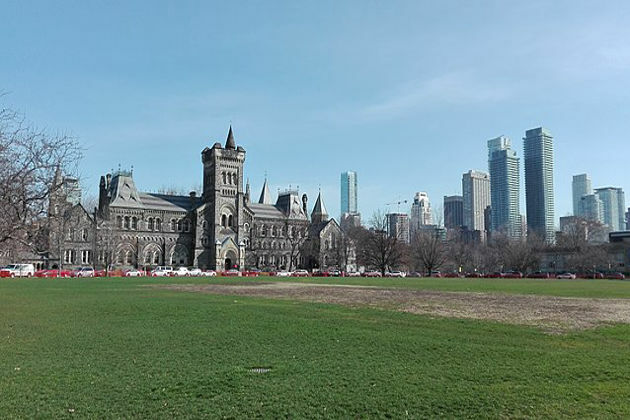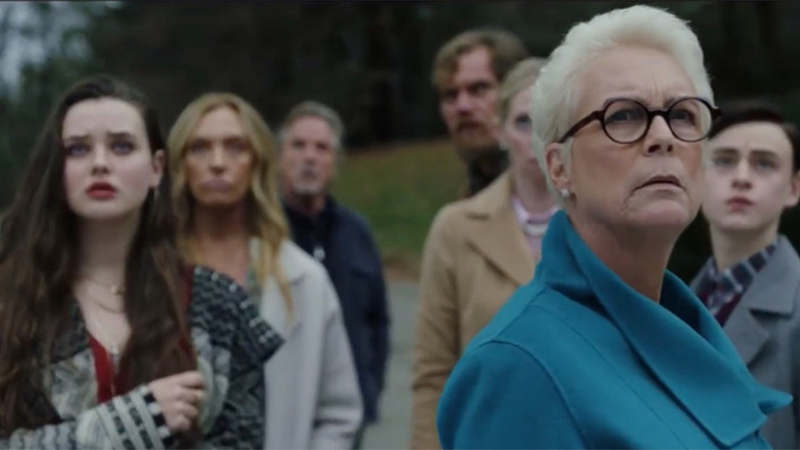Why are roller coasters also called Russian Mountains
RBTH
06 Nov 2022, 14:25 GMT+10
Having roots as a folk amusement in Russia, they became popular in Europe and turned into complicated ride attractions in the U.S. 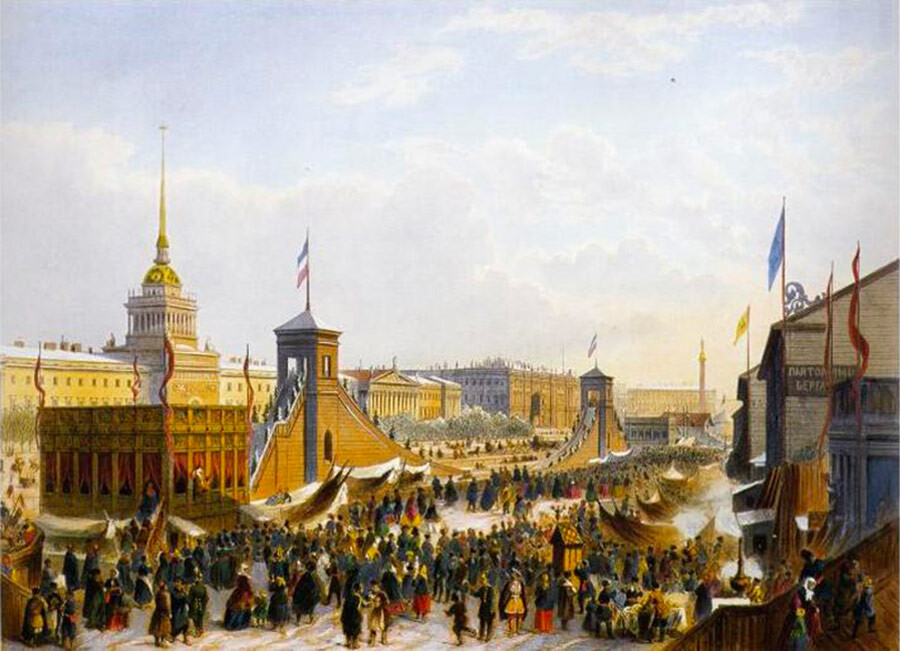
St. Petersburg's Admiralteyskaya Square during Maslenitsa, 1850
Public domain
One of the boldest scenes of Nikita Mikhalkov's iconic movie, 'The Barber of Siberia', is the scene of Maslenitsa festivities in Moscow. Among the entertainment is a huge wooden slope that people slide down.
The Maslenitsa ice riding is exactly what's behind the term "Russian Mountains", which was adopted by several Romance languages in other parts of Europe.
Sliding Hills - from winter to summer
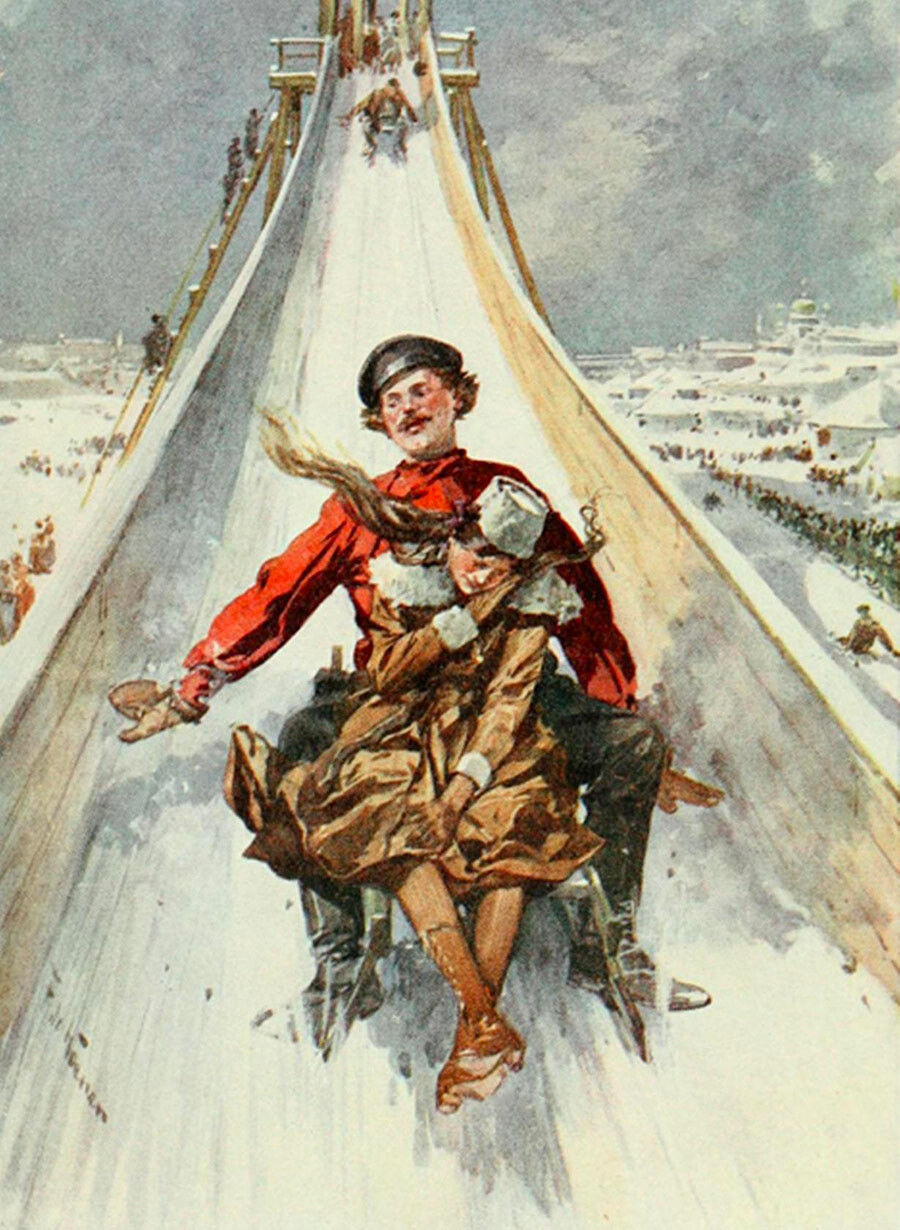
Frederic de Haenen. Winter hill riding in Moscow
Public domain
Russians had a rich history of winter entertainment. At this time of year, peasants were usually not that busy with work, so they made up different things to have fun. And one of the favorite things to do was to slide down a natural snow hill. The more people slide, the more the slope turns into ice, making it slide better. Then, people realized that they could simply cover any inclined surfaces with snow and water - and they turn into a great ice slope.
Maslenitsa was the festivities week at the end of winter, which was marked with enormous amounts of amusement, including riding the slopes. Big slopes were built in the big cities, including Moscow and St. Petersburg and people of any age and social status could join the fun of riding.
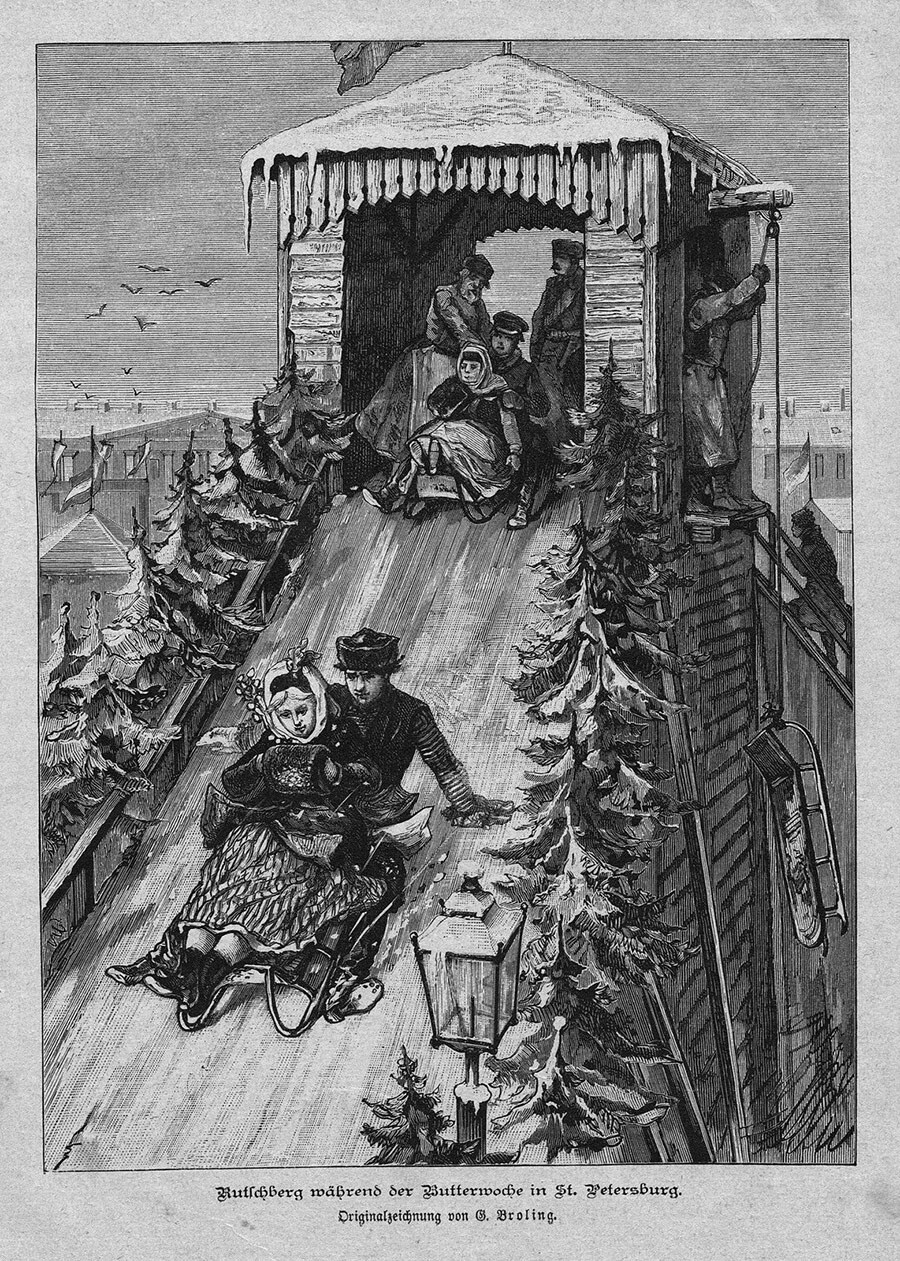
Maslenitsa in St. Petersburg. G. Broling. 1885
Public domain
"Speaking of our Moscow winter fun, I should mention one amusement: the ice mountains, on which we rode during Maslenitsa, and sometimes, if the weather permitted, during Great Lent. Several of these Russian Mountains (as they were called in foreign lands) were set up behind our house, in the garden. We were allowed to ride them, especially because such movement in the clean air was good for health," wrote Apollinariy Butenev, the Russian envoy to London in his memoirs in 1815.
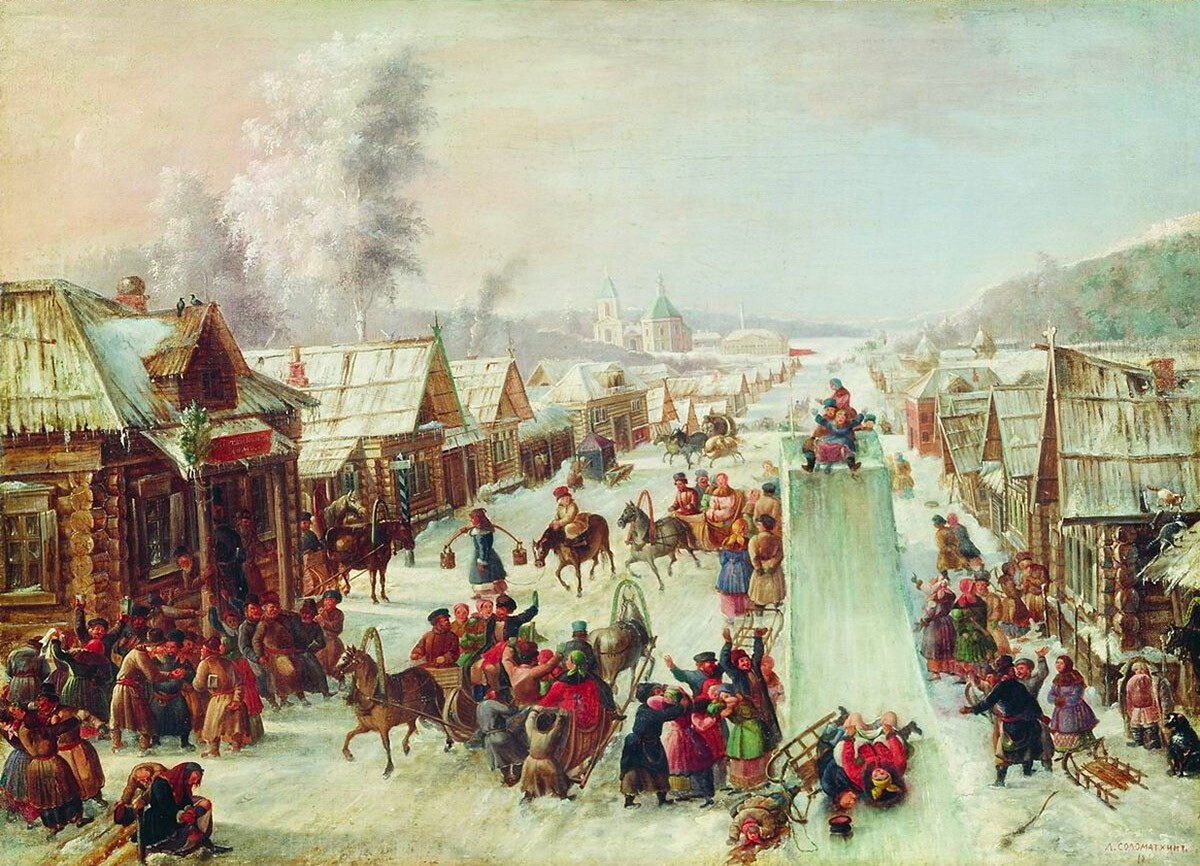
Leonid Solomatkin. Maslenitsa
Public domain
Tsarist residences also had their own winter sliding slopes. Moreover, in the 18th century, Empress Catherine the Great decided that there is no reason to wait until winter to entertain herself. The Empire's best engineers built a summer version for her, a Sliding Hill. This looked like a huge wooden ramp with three tracks more than six meters wide. The carts went down the middle track and then followed four slides going up and down. The carts moved forward by inertia more than 500 meters in total. After the ride, the carts were hoisted back atop along the side tracks with a special mechanism that was powered by horses.

A reconstruction of Catherine's Sliding Hill
V. Gavrilov
Read more about Catherine's Sliding Hill and see photos of its fancy pavilion here.
Montagnes Russes
"Ice slides, which are a favorite attraction of Russians, arouse great curiosity among foreigners. The Russian slides are 50-60 feet high, with balconies painted white on top and decorated with motley flags. On the back side is a ladder, by which people are constantly climbing, so that on the other side on an easy sled ride with great speed down a steep icy slope," reported the German 'Journal of Publicly Useful Knowledge' in 1835 calling the attraction - "Die Rutscheiberge in Russland" ("the sliding mountains in Russia").
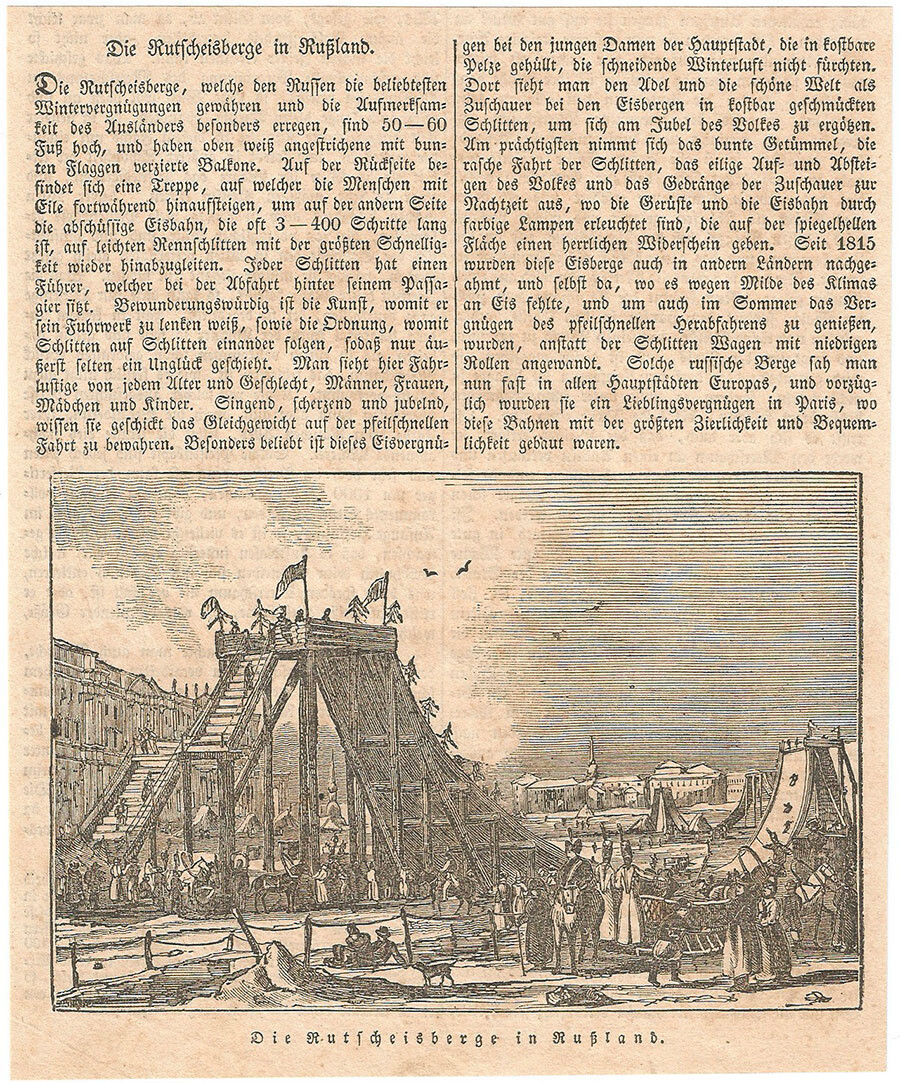
Many sources say it was Russian soldiers who reached Paris during the Napoleonic war and built small sliding hills on the Seine River. Soon the Russian attraction excited the Europeans so much that they started building their own slides in many cities. The climate conditions didn't provide easy access to the ice even in winter, so they used cars with wheels to slide down.
"When winter comes, the Muscovites build high scaffolds in most of their towns, they attach a ladder on one side to climb them, and on the other side there is a quick slide down to rush in a sleigh on wheels... This very pleasure of the Russians was brought to Paris in 1816," Claude Ruggieri, French festivities and fireworks specialist, wrote.
In 1816 one of the first famous sliding hill, called Promenades-Aeriennes, appeared in Paris, and even King Louis XVIII attended the ride.
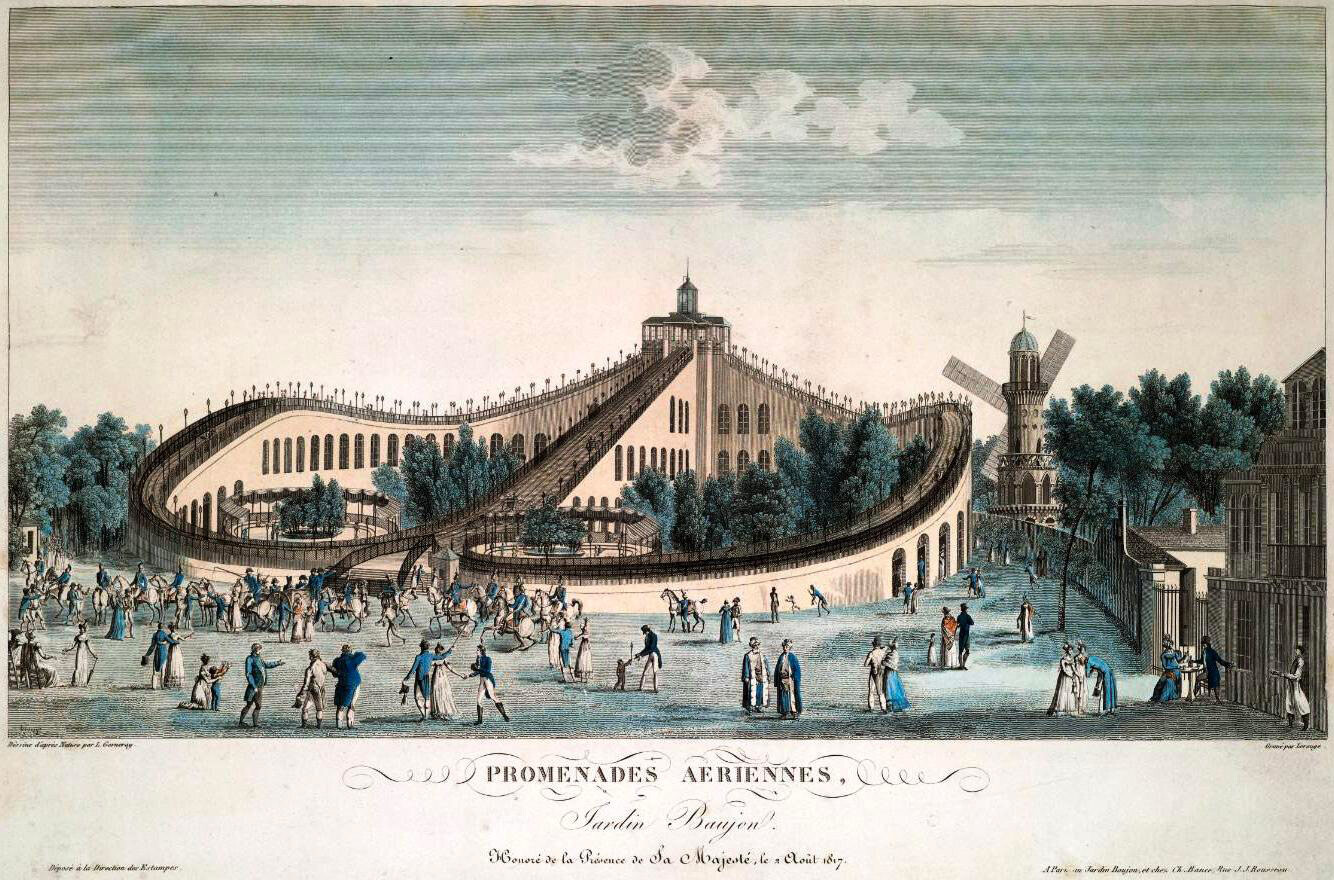
Promenades-Aeriennes in Paris
Public domain
Later, the entrepreneur Joseph Oller (who was also co-founder of the Moulin Rouge music hall) designed the Montagnes Russes de Belleville (Russian Mountains of Belleville) with a 200-meter track that looked like a double eight. So the Russian Mountains became a brand.
American Russian Mountains
In 1872 John G. Taylor patented the so-called 'Improvement of Inclined Railway' in the U.S.. He created a project with a mechanism that switches a car from one platform to another so that it could run a different slope then (and would be lifted back as well). However, it's not clearly known if he managed to build such a railway.
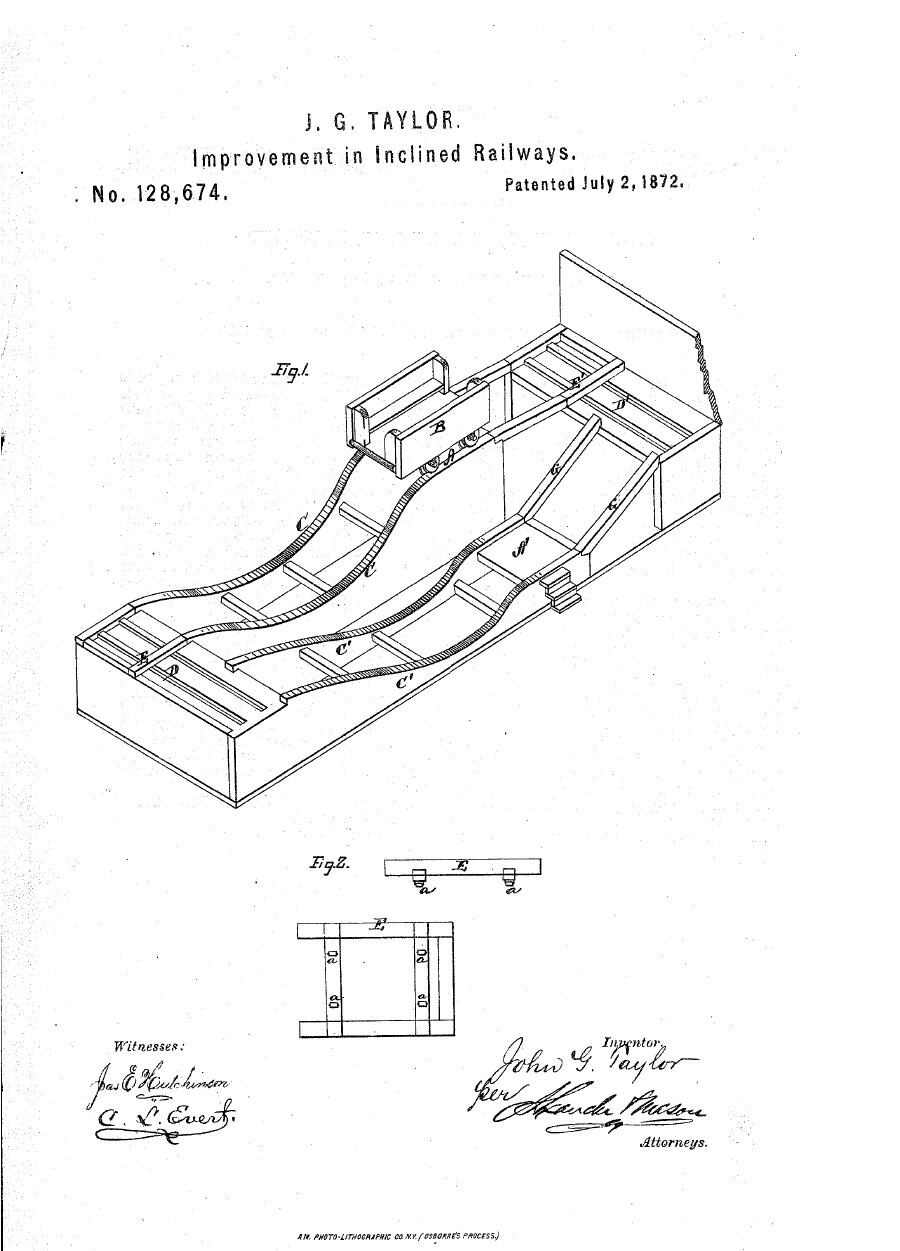
In 1885 the first widely known roller coaster was opened in 1885 at Coney Island in Brooklyn, New York City. It was called the Switchback Railway and was designed by LaMarcus Adna Thompson. A rider had to climb a 600 ft (183 m) tower and board a special car, and then slide off the wavy track to another tower - and then back. It resembles Catherine's Sliding Hill, doesn't it?
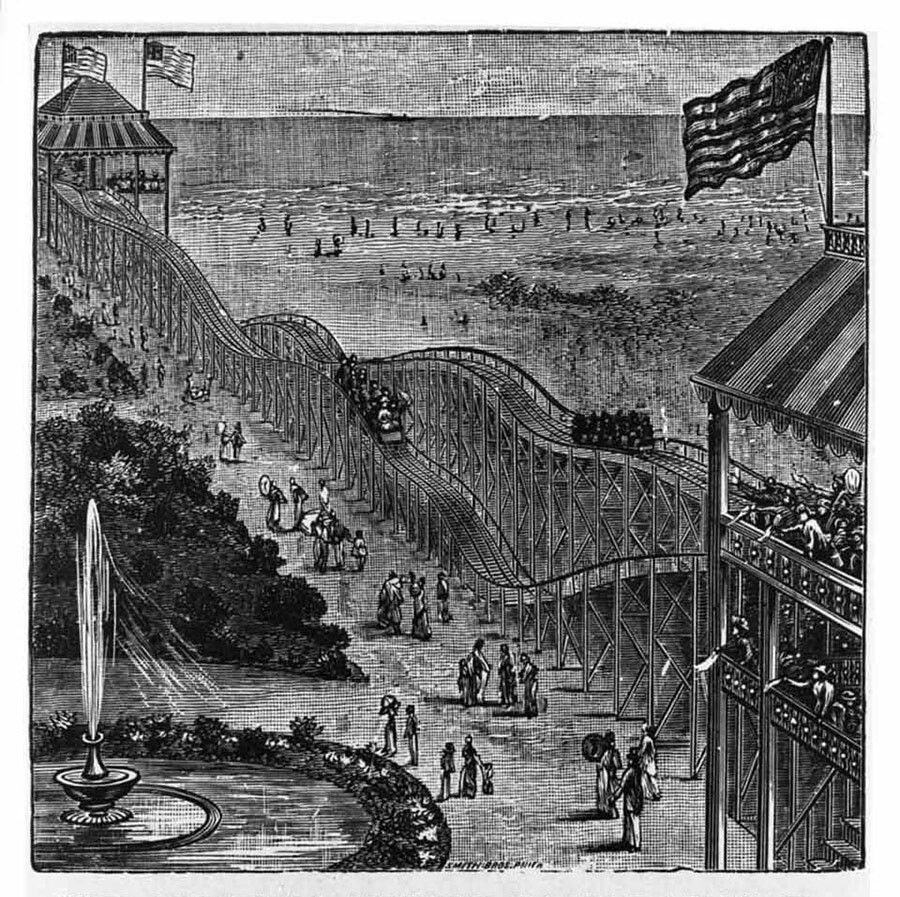
Thompson was famous for developing the roller coasters and the so-called gravity rides and made it into the whole industry in the U.S. It was there when the mountains got their modern technologies (and safety system, because even Catherine the Great once almost fell from the cable).
So the new roller coasters reached Russia as well, and despite the fact that the whole of Europe knew them as 'Russian Mountains', in Russia they became known as... American mountains! And this is how roller coasters still are called in Russia.
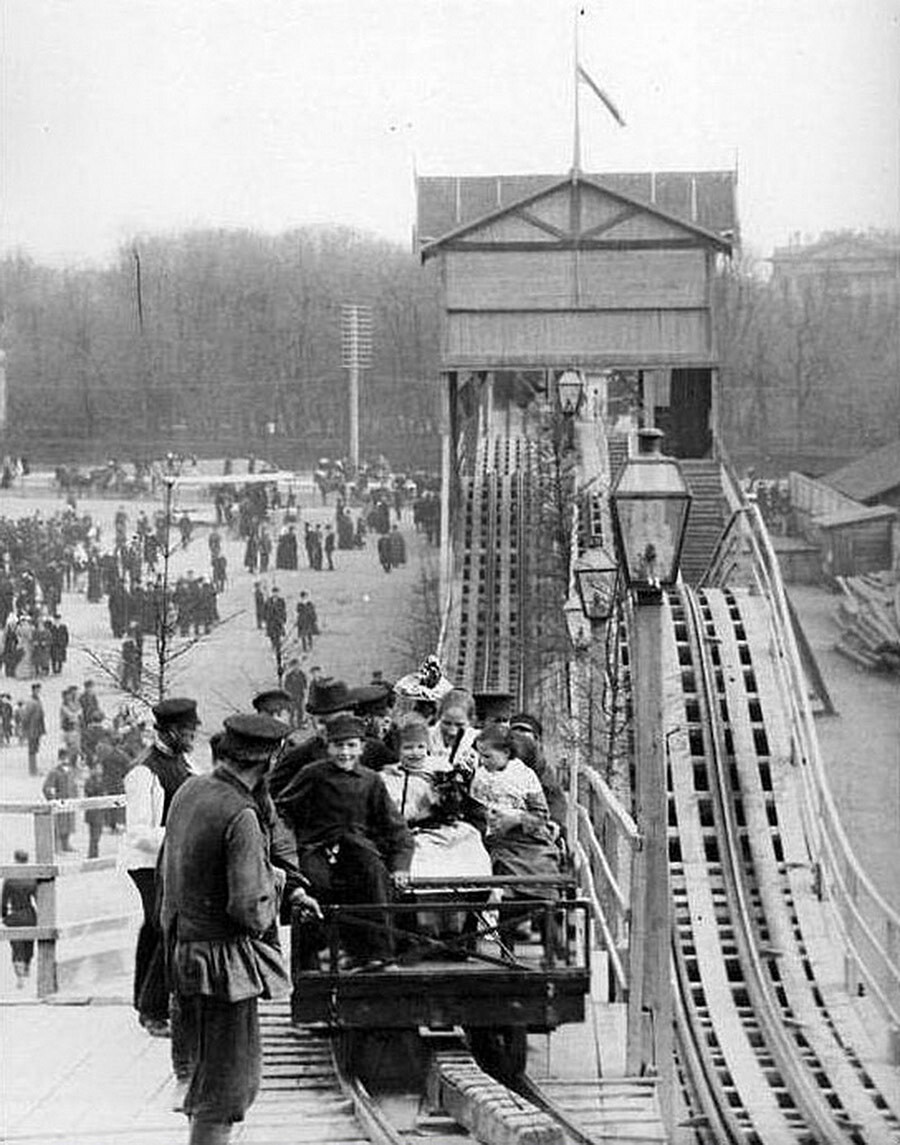
"American" mountains in St. Petersburg, late 19th century
Public domain
Dear readers,
Our website and social media accounts are under threat of being restricted or banned, due to the current circumstances. So, to keep up with our latest content, simply do the following:
- Subscribe to our Telegram channel
- Subscribe to our weekly email newsletter
- Enable push notifications on our website
- Install a VPN service on your computer and/or phone to have access to our website, even if it is blocked in your country
 Share
Share
 Tweet
Tweet
 Share
Share
 Flip
Flip
 Email
Email
Watch latest videos
Subscribe and Follow
Get a daily dose of Irish Sun news through our daily email, its complimentary and keeps you fully up to date with world and business news as well.
News RELEASES
Publish news of your business, community or sports group, personnel appointments, major event and more by submitting a news release to Irish Sun.
More InformationInternational
SectionBeijing crowds cheer AI-powered robots over real soccer players
BEIJING, China: China's national soccer team may struggle to stir excitement, but its humanoid robots are drawing cheers — and not...
COVID-19 source still unknown, says WHO panel
]LONDON, U.K.: A World Health Organization (WHO) expert group investigating the origins of the COVID-19 pandemic released its final...
Fox faces $787 million lawsuit from Newsom over Trump phone call
DOVER, Delaware: California Governor Gavin Newsom has taken legal aim at Fox News, accusing the network of deliberately distorting...
DeepSeek faces app store ban in Germany over data transfer fears
FRANKFURT, Germany: Germany has become the latest country to challenge Chinese AI firm DeepSeek over its data practices, as pressure...
Canadian option offered to Harvard graduates facing US visa issues
TORONTO, Canada: Harvard University and the University of Toronto have created a backup plan to ensure Harvard graduate students continue...
Israel should act fast on new peace deals, Netanyahu says
JERUSALEM, Israel: Israeli Prime Minister Benjamin Netanyahu says that Israel's success in the war with Iran could open the door to...
Europe
SectionIreland’s ex-minister Hanafin confirms bid for country’s presidency
DUBLIN, Ireland: Former government minister Mary Hanafin has confirmed she will seek the Fianna Fáil nomination to contest Ireland's...
DeepSeek faces app store ban in Germany over data transfer fears
FRANKFURT, Germany: Germany has become the latest country to challenge Chinese AI firm DeepSeek over its data practices, as pressure...
EU Commissioner says Kallas meant no offense to Ireland
DUBLIN, Ireland: Ireland's EU Commissioner Michael McGrath has defended Commission Vice President Kaja Kallas over her recent comments...
Apple allows outside payment links under EU pressure
SAN FRANCISCO, California: Under pressure from European regulators, Apple has revamped its App Store policies in the EU, introducing...
UN climate agency gets 10 percent boost amid global budget cuts
BONN, Germany: Despite widespread belt-tightening across the United Nations, nearly 200 countries agreed this week to increase the...
Kate Winslet's visit sparks profit jump at Ballymaloe Cookery School
DUBLIN, Ireland: Post-tax profits at Ballymaloe Cookery School rose by 53 percent in 2024 to 135,952 euros, helped by the buzz around...





